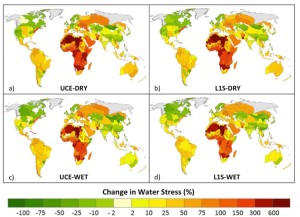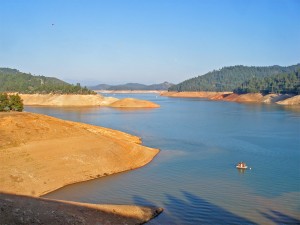We Can’t Say We Didn’t See It Coming
Jan 19th, 2014 | By admin | Category: Featured, Water IssuesBy Suzanne York, www.howmany.org
The governor of California has declared that the state is experiencing a drought emergency and is urging water rationing. Governor Jerry Brown called it “perhaps the worst drought that California has ever seen since records (began) about 100 years ago.”
This came shortly after the release of a MIT study this month that found that by 2050 more than half the world’s population will live in water-stressed areas, and about a billion or more will not have sufficient water resources.
In an attempt to assess future water demands and the impacts of climate change, the researchers used a new modeling tool to calculate the ability of global water resources to meet water needs through 2050.
Climate change is a major factor, but not the only one. The MIT researchers concluded that population and economic growth are responsible for most of this increased water stress. It is encouraging that these issues are part of the analysis, as population growth is often ignored as a contributing factor, and economic growth is touted as a panacea that can continue endlessly, despite ecological limits.The strongest climate impacts on relative changes in water stress are seen over many areas in Africa, but strong impacts also occur over Europe, Southeast Asia and North America. This is because, for instance, changes in precipitation patterns would limit water supplies needed for irrigation.
The researchers predict that 5 billion (52 percent) of the world’s projected 9.7 billion people to live in water-stressed areas by 2050. They also expect about 1 billion more people to be living in areas where water demand exceeds surface-water supply. These will be regions already face water stress — specifically India, Northern Africa and the Middle East.
Back to California, business as usual, continued reliance on fossil fuels, and a growing population have contributed greatly to the situation the Golden State finds itself in today. The very fact that the fracking industry is making inroads reflects the short-sightedness and wrong direction chosen by California’s leaders. Fracking uses a tremendous amount of water. As does industrial agriculture, a big part of its economy. Globally, the agricultural sector, uses 70% of global water withdrawals for irrigation, much of it inefficient.As California grapples with promoting voluntary (for now) water rationing, better conservation efforts, and other measures, it should take a hard look at living in a world of drought and water shortages. Extremely dry conditions have parched the state since 2011. What California, the U.S., and the world needs are policies that incorporate the fact of current and future water-stress so people, business, and governments can adapt to a drier world.
Suzanne York is a senior writer with the Institute for Population Studies.


